How to Use Potty Pads and How to Buy the Right Ones for Your Puppy
Table of Contents
- How to Use Potty Pads and How to Buy the Right Ones for Your Puppy
- The Good and Bad of Using Puppy Pads
- Frequently Asked Questions on Puppy Pads
- Disposable vs. washable puppy pads
- How to Train Your Puppy to Use Pads
- Factors to Consider when Buying a Puppy Pads
- Best Pee Pads for your Puppy (Our favorite picks)
- So what do I use?
- Final Thoughts
Puppy pads, also known as pee pads or potty pads really come in handy when you cannot let your puppy out to do their business.
You can use puppy pads when traveling, after surgery when you need to limit your puppy’s movement and when the weather is bad.
Puppy pads also come in handy for pet owners living with special needs or elderly owners who can’t take their dogs out often. They’re also practical for city dwellers who don’t have a backyard where their dogs can go out to pee.
In this blog post, I’ll be discussing everything you need to know about puppy pads, including the good and bad.

The Good and Bad of Using Puppy Pads
Before we get to the nitty-gritty of puppy pads and how or when to use them, it’s important to know exactly what you’re getting yourself into.
Here are the advantages and disadvantages of using puppy pads.
Pros of using puppy pads
Here are the benefits of using puppy pads.
1. They’re convenient for people who can’t take their puppies out regularly.
Puppy pads really come in handy for pet parents who don’t have the liberty to take their puppies out when needed. This could be because of an illness, old age, or a busy schedule.
For example, if you stay late for work, your puppy may be stressed while trying to hold the urge to pee as they wait to go outside. And sometimes, they can only hold the pee for so long, and that’s when accidents happen.
The younger and the smaller your dog is, the more they will need to go potty.
Having puppy pads ensures your puppy doesn’t pee on your carpet or struggle as they wait to be let out.
They also help when traveling to a new place with your pup and you don’t have the liberty to make several stops for them to empty their small bladders.
2. Puppy pads are convenient during potty training.
Before your puppy establishes a regular-peeing routine, they’ll be peeing several times a day. They may even get an urge to pee at night or very early in the morning!
Puppy pads save you from the trouble of waking up to let them out in the middle of the night.
Puppy pads also make it easy when housebreaking your dog because you can remove their pad and take it outside, and they’ll follow the scent.
3. They’re easy to use
Puppy pads are easy to use, especially if you’re using the disposable ones because all you need is to trash them after use. They’re also highly absorbent, leaving your floor clean and protecting your floor from any urine damage and smell.
Cons of using puppy pads
Here are some drawbacks of using puppy pads.
1. It can complicate the housebreaking process.
Although puppy pads can act as a clue to where you want your puppy to pee, they can also cause confusion.
Once they’re used to using the spot where you place their pads in the house, it can be very confusing when you try to direct them to pee outside. This means you’ll need to put in a little more effort in the housebreaking process.
2. Your puppy may confuse your carpet for the pee pads.
In the beginning, your puppy may confuse your carpets for the pee pads and end up peeing on them.
3. Some puppies love to play with pee pads.
Puppies are very playful, and some are especially fascinated by puppy pads. They end up playing with them, tearing them, and causing a huge mess.
4. Pee pads can make dog owners lazy.
Puppy pads are very convenient in that they can make dog owners lazy. This may mean fewer dog walks and outdoor activities for puppies.
We highly discourage using pee pads if it affects the frequency of how often you let your puppy out.
5. There is an ongoing cost.
Pee pads are an ongoing expense, especially if you use disposable pads.
Cloth pads that can be washed cost more to purchase but they will last for years and you won’t have the ongoing expense of buying pads.
But then you will have to wash them whereas with the disposable pads, you just throw them away.
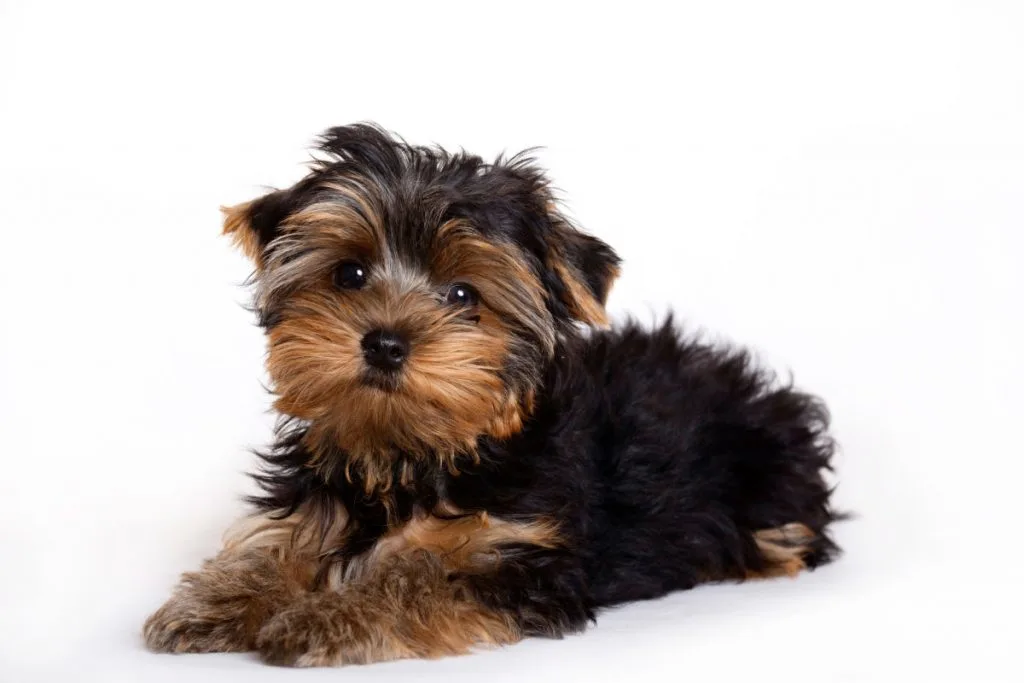
Frequently Asked Questions on Puppy Pads
Here are some of the common questions that people ask regarding puppy pads.
How often should you change pee pads?
After 12 hours or 2-3 uses.
This is the average time of changing a pee pad, but the timing is really relative. You can sometimes wait longer though in some cases you’ll need to change them in an hour or less depending on usage.
I find the best way to determine when to change the pee pads is to manually check them out, especially during the puppy stage. If the pads are beginning to look soak-y, it’s time to remove them before they start smelling.
Do pee pads confuse dogs?
Pee pads can confuse puppies initially, especially if you’re training them to use potty pads and housebreak them at the same time.
However, the confusion only lasts for a while, and once you train them to go outside, they get it.
Do be aware though, small dogs are notoriously hard to housetrain and by using pee pads and trying to train them to potty outside, they may never become completely trained.
Are pee pads a good idea?
Yes, when used for the right reasons.
For instance, if you’re not around to take your puppy out, it’s a good idea to introduce your puppy to pee pads. By doing so, they don’t need to hold their pee longer than necessary and they won’t make a habit of peeing on your carpet.
Pee pads are also a good idea for elderly or disabled people who can’t take their pets out often.
Should you put pee pads in the puppy’s crate?
No. It’s not advisable to put a pee pad in your dog’s crate.
You want your puppy to see their crate as their resting place and not their toilet. Leaving pee pads inside their crate sends the message that it’s okay for them to pee in the crate. Subsequently, they’ll pee in the crate even when there is no pee pad.
Secondly, puppies do many things when they’re anxious or bored. Leaving pee pads in the crate may encourage them to chew on the pee pads, which is a health hazard.
If you’re planning to go out for a long time, it’s best to find time and take your dog outside before you leave. If you can, get someone to drop by and take your dog out to potty.
Can I use puppy pads at night?
Yes, this is one of the benefits of using pee pads.
A puppy’s bladder is small, and they’ll need to relieve themselves in the middle of the night. Simply leave the pee pads strategically placed where they can access them.

Disposable vs. washable puppy pads
There are two types of puppy pads; washable pads and disposable pads. Here is how they compare.
1. Durability
The reusable pads are heavier than disposable pads because they’re designed to last longer. The washable pads have more layers of commercial-grade textile compared to the disposable pads.
This means that your pup will more easily tear the disposable puppy pads than the washable puppy pads.
2. Absorption rate
When your pup pees three times on the disposable pad, you might notice a patch on the floor depending on their fluid intake. However, the washable puppy pads have high absorbent power, so you’ll not experience these issues, thanks to their thickness.
That being said, you need to wash the puppy pads after three or four uses to protect your puppy from getting infections.
3. Environmentally
If you’re an environment enthusiast, you’ll prefer using the washable pee pads because they don’t end up in landfills.
However, if you still prefer using disposable pee pads, there is no need to feel guilty; you can always buy from a company that makes eco-friendly disposable pee pads.
4. Economically
In terms of budget, the washable pads are smart because you only need to buy them once, while you’ll have to keep buying the disposable pads.
One washable pad equates to 300 or more disposable pads. I have 4 washable pads and bought them when I first got my chihuahua 4 years ago and they are still in good condition.
5. Convenience
I know up to this point, it seems like I’m only advocating for the washable pads.
However, it’s better to use disposable pads when it comes to convenience because all you have to do is trash them after use.
They’re also lighter than the washable pads, making them easy to pack during travel. And you don’t have to carry smelly, dirty pads back home to wash. You just throw the disposable ones away.
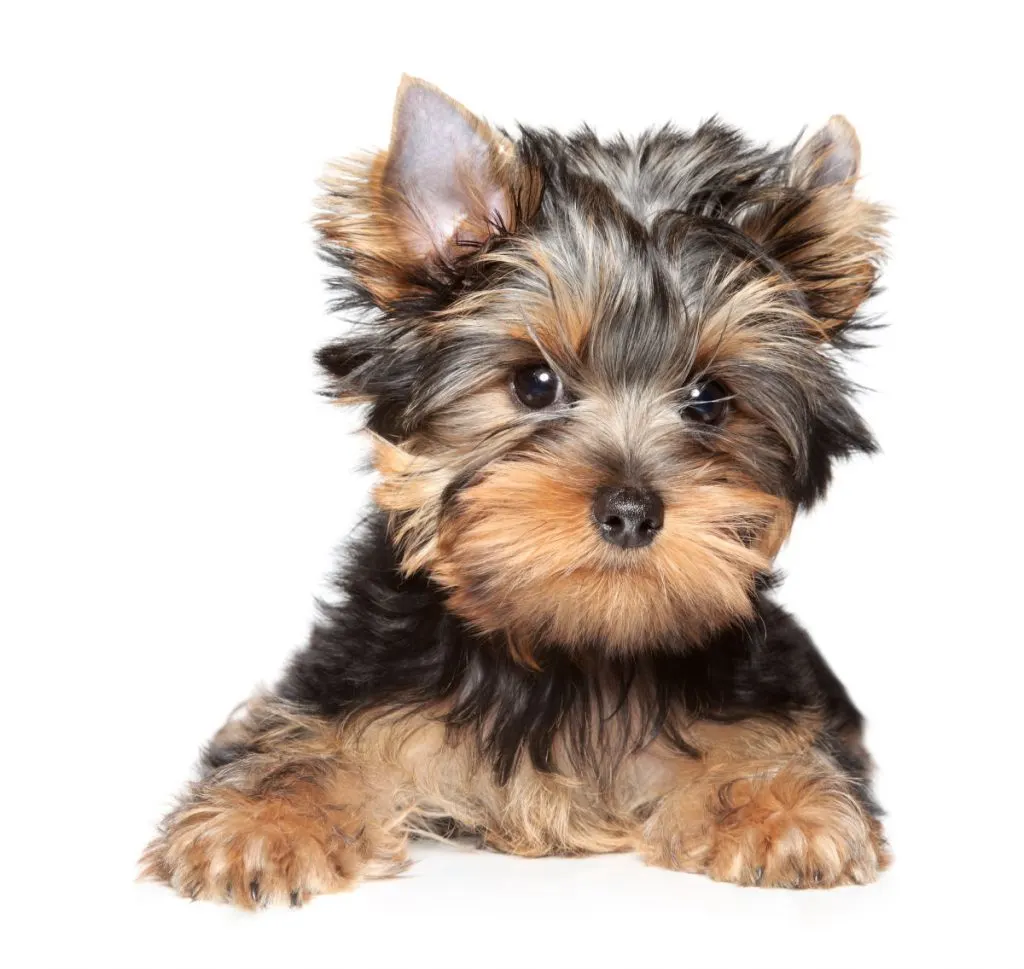
How to Train Your Puppy to Use Pads
Using pee pads is a new concept for your puppy, so you’ll have to teach them how to use them. Puppy potty training can be very frustrating and undeniably one of the hardest parts of bringing up a puppy. However, it can get easier with the right guidance and an idea of what to expect.
Here are some tips on training your puppy to use potty pads.
1. Choose the right pee pads.
The idea behind having a potty pad is to create a pee station for your puppy, so they don’t pee on everything in the house. It can be anything visible, including a towel or newspaper. However, it’s in your best interest that your material has high absorbent power to protect your floor or carpet.
Depending on your preferences, you can buy washable or disposable pads (we will be sharing our favorite options for both later).
2. Introduce your puppy to the pee pads.
The next stage is to introduce your puppy to the potty pads so that they’re not scared of them. You want their first experience with the potty pads to be great.
Let them sniff around and familiarize themselves with the potty pads. You can take this opportunity to introduce the peeing command word to them like “Go Potty.”
3. Know the right potty timing for your puppy.
I know this is the most absurd advice you’ve received yet. How are you supposed to anticipate when your puppy wants to pee? You can do it, and you don’t have to be a dog whisperer.
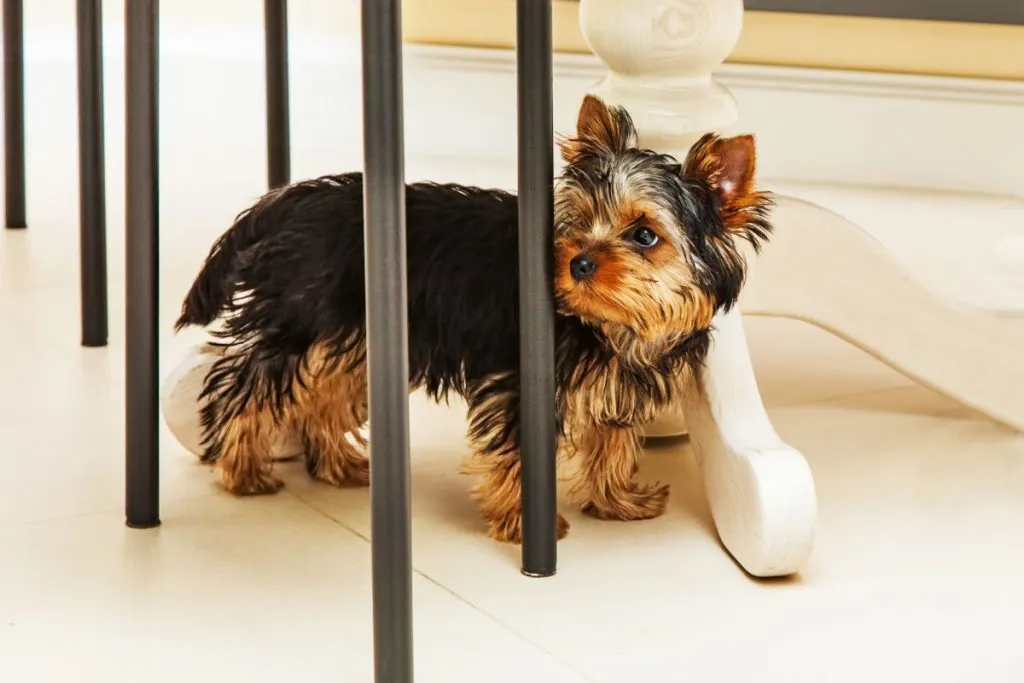
Here are some cues to help you:
- If your puppy was busy playing with its toys and they stopped and started sniffing around, there is a chance that they want to pee. Take them to the pee pad.
- Most puppies are likely to pee after sleeping, eating, playing, or after drinking water. Once they’re done with any of these activities, within 10-15 minutes take them to the pee pad.
- Lastly, small puppies have small bladders, and they need to pee after every 2 to 3 hours. Make an effort to take your puppy to the pee pad every few hours.
4. Give your puppy a treat
Whenever your puppy pees on the potty pad, it’s important to acknowledge that they did the right thing and reward them. You can also praise them verbally with something like “good job, girly,” or something to let them feel appreciated.
Just like humans, positive reinforcement works with puppies, and they’re likely to repeat an act that’s appreciated.
5. Be consistent
Like any other training process or habit, consistency is everything in potty training. For starters, ensure you place the pee pad in the same place all the time.
Also, keep a regular feeding schedule and use the same command phrase until your puppy learns how to pee at the pad by themselves.
6. Practice Patience
This is probably the most important takeaway in this section. You need to be very patient with the process. Avoid the temptation of hitting or scolding your puppy when they have accidents. This will only instill fear in them, making them anxious, resulting in more accidents.
Just trust the process, stay consistent, and your puppy will learn.
7. Make it Easy for them to Learn
To help them learn at first, before throwing away a used pee pad, rub a paper towel over a little bit of the pee and then rub it on the clean pad. This helps your dog to smell where she needs to potty.
After she gets used to it, you won’t need to do that anymore.
Likewise, if you have male dogs, you can get this cool little fire hydrant to sit on the pee pad to show him where to aim (of course young male puppies will still be squatting for a while).

Also wipe a little pee on the fire hydrant too, to help your little guy smell where to go.
Factors to Consider when Buying a Puppy Pads
Here are some factors to consider when shopping for your puppy’s pee pads.
Disposable vs. washable potty pads
For long-term purposes, it’s recommended you use washable pee pads because they’re eco-friendly and cost-effective. However, I have used disposable pee pads because some occasions like traveling or visits call for something easy to use. If I leave my puppy with my bestie, they obviously won’t appreciate the extra pee pad cleaning.
Always choose the type of pee pads based on your convenience.
Absorption rate
Different pee pads have different layers and subsequently a different absorbency rate. Before buying the pads, always check the description to see how thick they are and other anti-leakage features they come with.
For instance, some pee pads will even have a carbon layer to absorb yellow spots and neutralize the pee smell.
Most manufacturers will also include the weight of the dogs their pads are meant for. Ensure you check to buy one that works well for your pup without any leakage.
Scent
If you’re away from home, I recommend going for a scented pee pad for the most part. This helps in reducing the odor in your home. If you have a large space, consider buying large pads to give your puppy more space.

Best Pee Pads for your Puppy (Our favorite picks)
We got you if this is the first time you’re buying pee pads. Here are some of the best pee pads in the market to get you started.
Let’s get shopping.
1. SincoPet Washable Dog Pee Pads (Our Top Pick)
I thought I’d get you started with washable dog pee pads. The SincoPet Washable Dog Pee Pads are among the most highly-rated pee pads on Amazon, and that’s for a reason. What you see is actually what you get, which is not common in the digital world that’s saturated with manipulated images.
The pee pads are made of a great fabric with a high absorption power. Your dog can use it up to 30 times without it leaking. However, It’s not advisable to let it stay for that long before washing unless you’re traveling. The pee pad also has an anti-slip silica gel at the bottom, so it protects your floor.
Benefits
- Comfortable fabric
- It doesn’t slip or leak
- It doesn’t smell
- Easy to clean
Drawbacks
- Nothing significant
2. Pet Parents Pawtect™ Pads Washable
The Pet Parents Pawtect washable pee pads are also a great choice. Besides their good features as a pee pad, the pads are available in colors that easily blend in with any modern décor. This way, the pee pads aren’t the first thing people notice when they come into your house.
When it comes to the features, the pads also have a non-slip grip, and they’re made of very high-quality and durable fabric.
Benefits
- It has a quality and durable fabric
- It has a non-slip grip to avoid any leakage
- It comes in colors that blend in with your décor
Drawbacks
- They’re not very anti-smell compared to our first recommendation
3. Bulldogology Premium Puppy Pee Pads (Our favorite disposable pads)
The Bulldogology premium pads are costly, but their price is justified. You get more value than you pay for.
The pads are made using a bullsorbent technology that absorbs and turns liquid into gel to protect your floor and avoid any leakage. Another great feature is their effective adhesive sticky tape that ensures the pee pad doesn’t move and cause a mess.
The brand has also considered even the most minor details like colors to make their pads effective. Some pet parents have observed the white external lining helps their puppies to spot the pads easily, which reduces the number of accidents.
Lastly, the pads have an in-built scent to attract the pup and an odor control technology to keep your space smelling fresh.
Benefits
- Odor control technology to keep your space fresh
- An effective adhesive sticky tape to keep the pad in place
- Bullsorbent tech that turns liquids into gel
Drawbacks
- They’re a little pricey compared to other disposable pads
4. Frisco Dog Training & Potty Pads
If you’re looking for potty pads to train your puppy or something temporary like potty pads for travel, the Frisco Dog Training and Potty pads are amazing. They’re budget-friendly, and they get the job done thanks to their design and fabric.
These potty pads are made of high-quality and highly absorbent material that helps lock the wetness. The pads also have a leak-proof plastic lining to protect your furniture and floors from any moisture. They also have a built-in scent to attract your pup, making potty training easier.
Benefits
- Built-in scent to attract your puppy and reduce accidents
- Budget-friendly
- Well designed to prevent any leaks
Drawbacks
- Only available on Chewy.
5. Glad for Pets Black Charcoal Puppy Pads
CHECK FOR PRICE AND AVAILABILITY.
Our last recommendation is the Glad for Pets Black Charcoal Puppy Pads. There are so many mixed reactions when it comes to these pads. However, we will help set the record straight.
These pads have five layers of strength that help prevent any leakage. Like other premium pads, they also have technology that absorbs the liquids and turn them into a gel.
The most common complaint is that the pads aren’t absorbent and they are likely to cause accidents.
What happens is that the pads may take at least 30 seconds before they absorb the liquids, but once they do, you can expect zero stains. If you have a very jumpy puppy, consider placing the pad in a tray to avoid any spills before absorption.
Benefits
- It has an odor neutralizer
- No yellow spots
- Reasonable price for the quality you get
Drawbacks
- Slow absorption power compared to other premium pads.
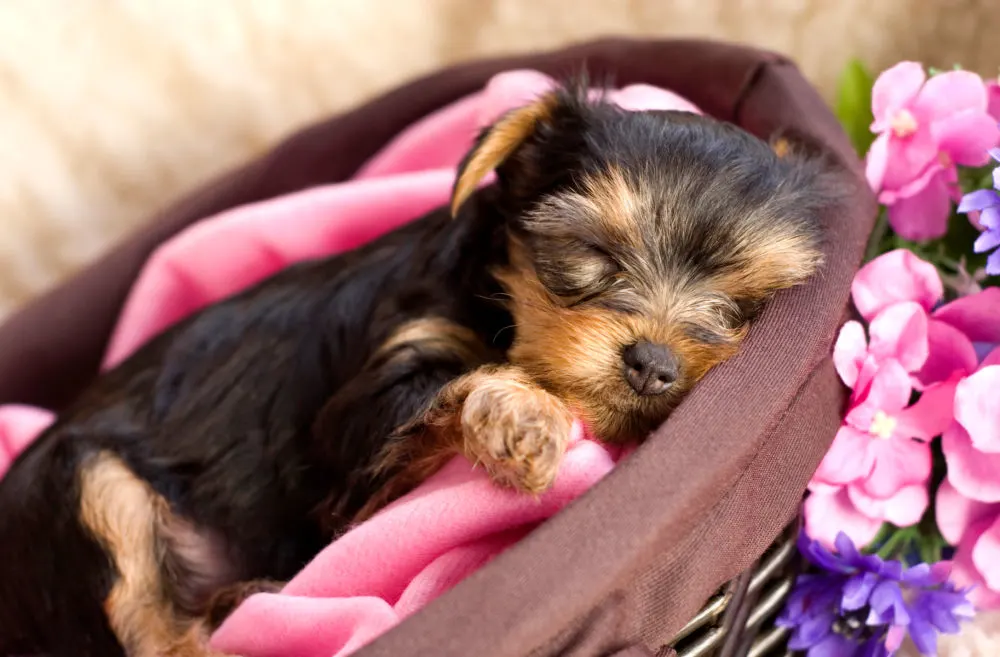
So what do I use?
I have 4 dogs. 2 are Yorkies, 1 is a Chorkie and 1 is a Chihuahua.
The Chihuahua is the only female and I got her when she was 11 months old. She had never been outdoors at that point and had only used a potty pad and despite my best efforts to train her to “go” outside, she refused to do it.
So just being happy that she at least used the pee pads, I bought the washable pads for her. However, when we travel, I use disposable pee pads.
The other 3 dogs are all males and for the most part, do their business outdoors. If it’s raining though, they refuse to go outside and will use the potty pads too.
So for the washable pads, we use the SincoPet pads and for the disposable pads, we usually use the Bulldogology brand. But I have been known to use other disposable brands too.
Final Thoughts
Pee pads are a huge save on several occasions. You can use them for potty training, travels, indoor peeing during bad weather, etc. They’re also a great solution for elders and people with special needs who aren’t able to take their pups out regularly.
Whatever your reason for using pee pads is, we hope you learned what you need to know about how to use them. If you still have some questions, please let us know in the comment section, and we will do our best to answer your question.
ALSO READ:
If you notice your puppy likes to pee in a certain spot, that’s a great place to put the pad. Rub a little of your puppy’s pee on the pad to attract them to the spot. When you notice them sniffing around like they are looking for a spot to go, place them on the pad. Praise them when they use it. Also be sure to put them on the pad first thing in the morning and before bedtime along with after they eat.
Yes, while they are learning to use it, it helps them to know where to go potty. After they are comfortable using the pads, you won’t need to do that.
Sure you can. My boys go outside but will use a pad when it’s raining. My girl has always used a pad and doesn’t like being outside but when she does go outside, she will usually pee there too.
That depends on your goals for your dog. Some people use them exclusively for the entire dog’s life.
If you want to transition to having your dog exclusively go outside then when you notice your dog is able to hold their urine/feces all night, then they are ready to no longer have the pads down.
Yes, they are a great option for people in cold, rainy climates, elderly people, or apartment dwellers.
I buy the bigger-sized pads and just put one or two down when beginning pad training. After the dog is comfortable with using pee pads, you can go to just one pad and use a smaller size if you want. Of course, if you have a big dog, continue using a big potty pad down.
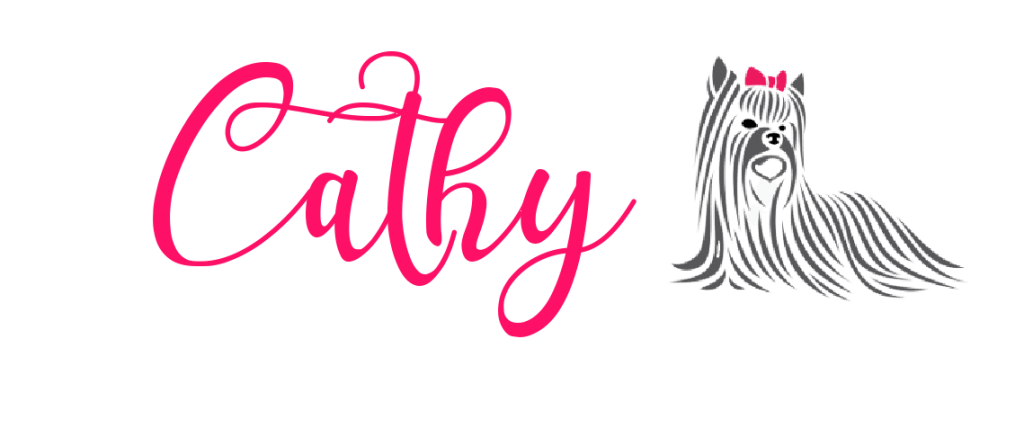

Cathy Bendzunas
Dog Blogger, Former Dog Groomer
I have adored Yorkies for well over 50 years. As a young adult, I began to show and breed them. Now, I just write about them and have several in my little pack of small dogs.
I have had dogs all my life and have trained as a dog groomer. I also have been a kennel worker, worked in a pet hotel through PetSmart, and still am a pet sitter.
Check out my bio for more information about me.
